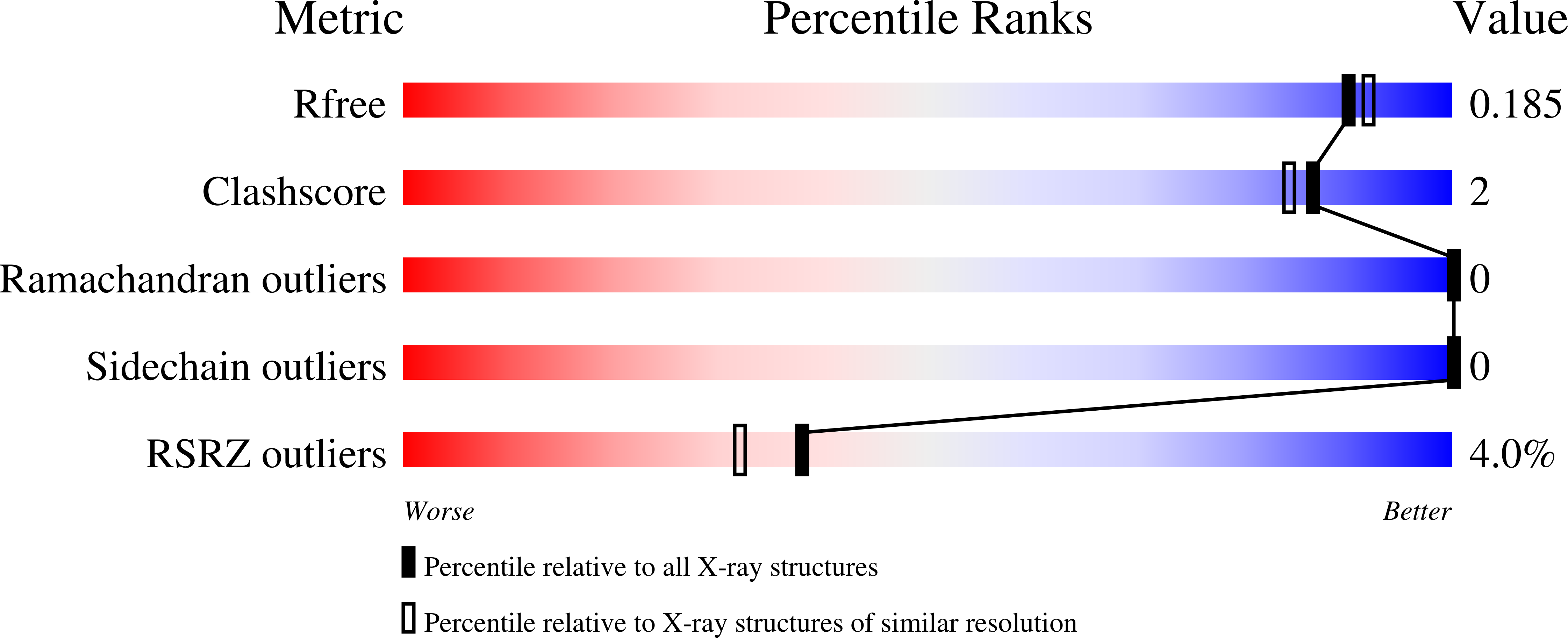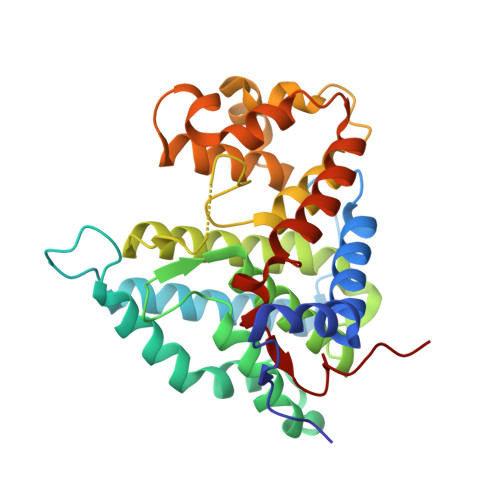Structural basis for PTPA interaction with the invariant C-terminal tail of PP2A.
Low, C., Quistgaard, E.M., Kovermann, M., Anandapadamanaban, M., Balbach, J., Nordlund, P.(2014) Biol Chem 395: 881-889
- PubMed: 25003389
- DOI: https://doi.org/10.1515/hsz-2014-0106
- Primary Citation of Related Structures:
4NY3 - PubMed Abstract:
Protein phosphatase 2A (PP2A) is a highly abundant heterotrimeric Ser/Thr phosphatase involved in the regulation of a variety of signaling pathways. The PP2A phosphatase activator (PTPA) is an ATP-dependent activation chaperone, which plays a key role in the biogenesis of active PP2A. The C-terminal tail of the catalytic subunit of PP2A is highly conserved and can undergo a number of posttranslational modifications that serve to regulate the function of PP2A. Here we have studied structurally the interaction of PTPA with the conserved C-terminal tail of the catalytic subunit carrying different posttranslational modifications. We have identified an additional interaction site for the invariant C-terminal tail of the catalytic subunit on PTPA, which can be modulated via posttranslational modifications. We show that phosphorylation of Tyr307(PP2A-C) or carboxymethylation of Leu309(PP2A-C) abrogates or diminishes binding of the C-terminal tail, whereas phosphorylation of Thr304(PP2A-C) is of no consequence. We suggest that the invariant C-terminal residues of the catalytic subunit can act as affinity enhancer for different PP2A interaction partners, including PTPA, and a different 'code' of posttranslational modifications can favour interactions to one subunit over others.

















